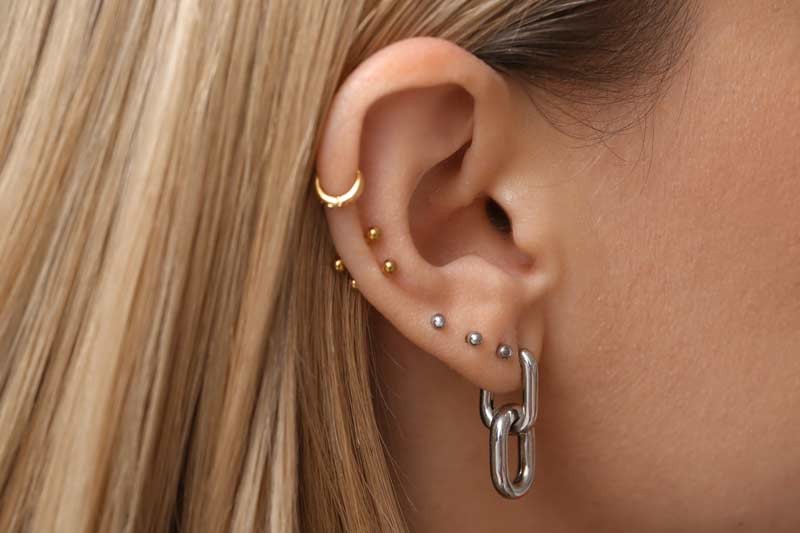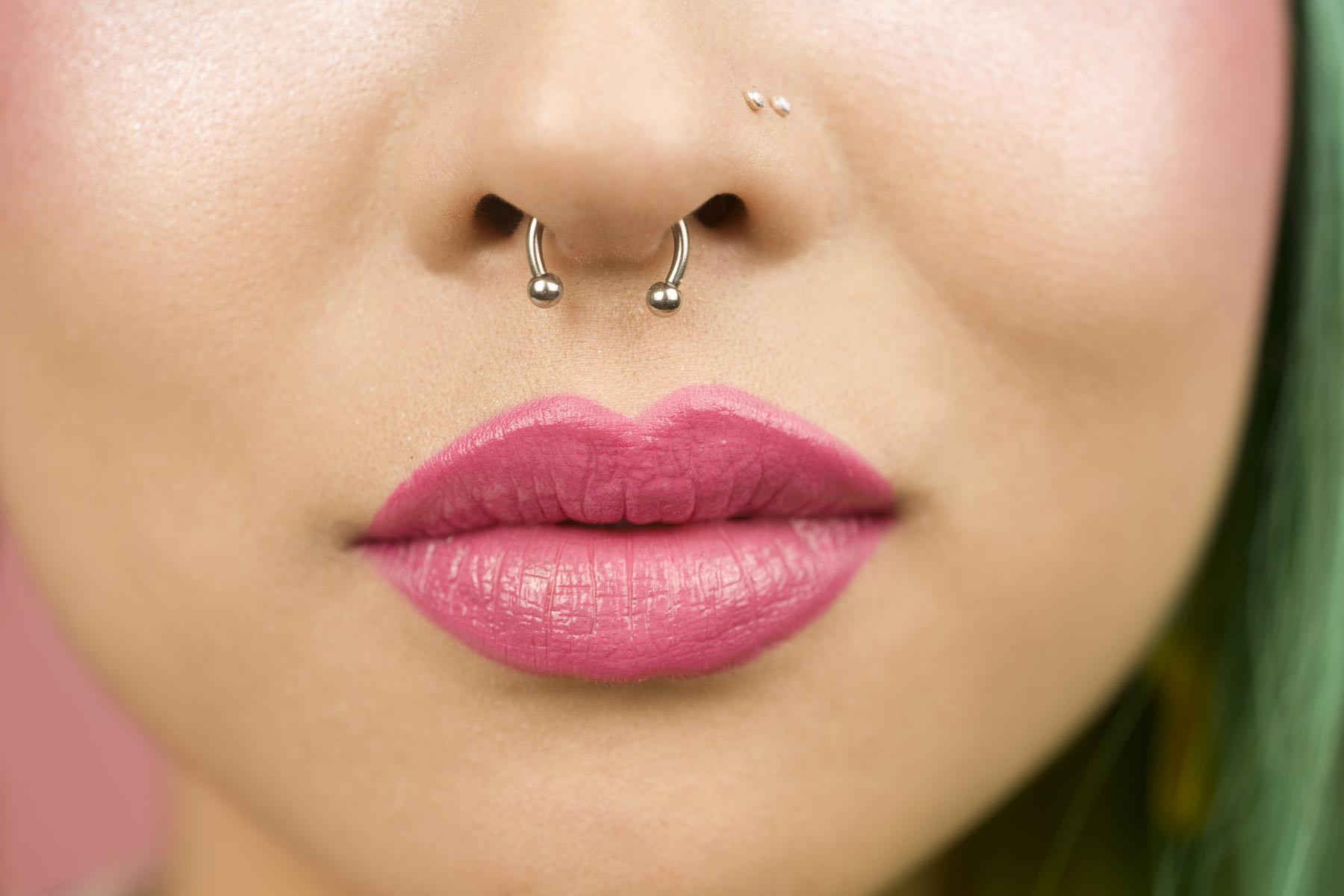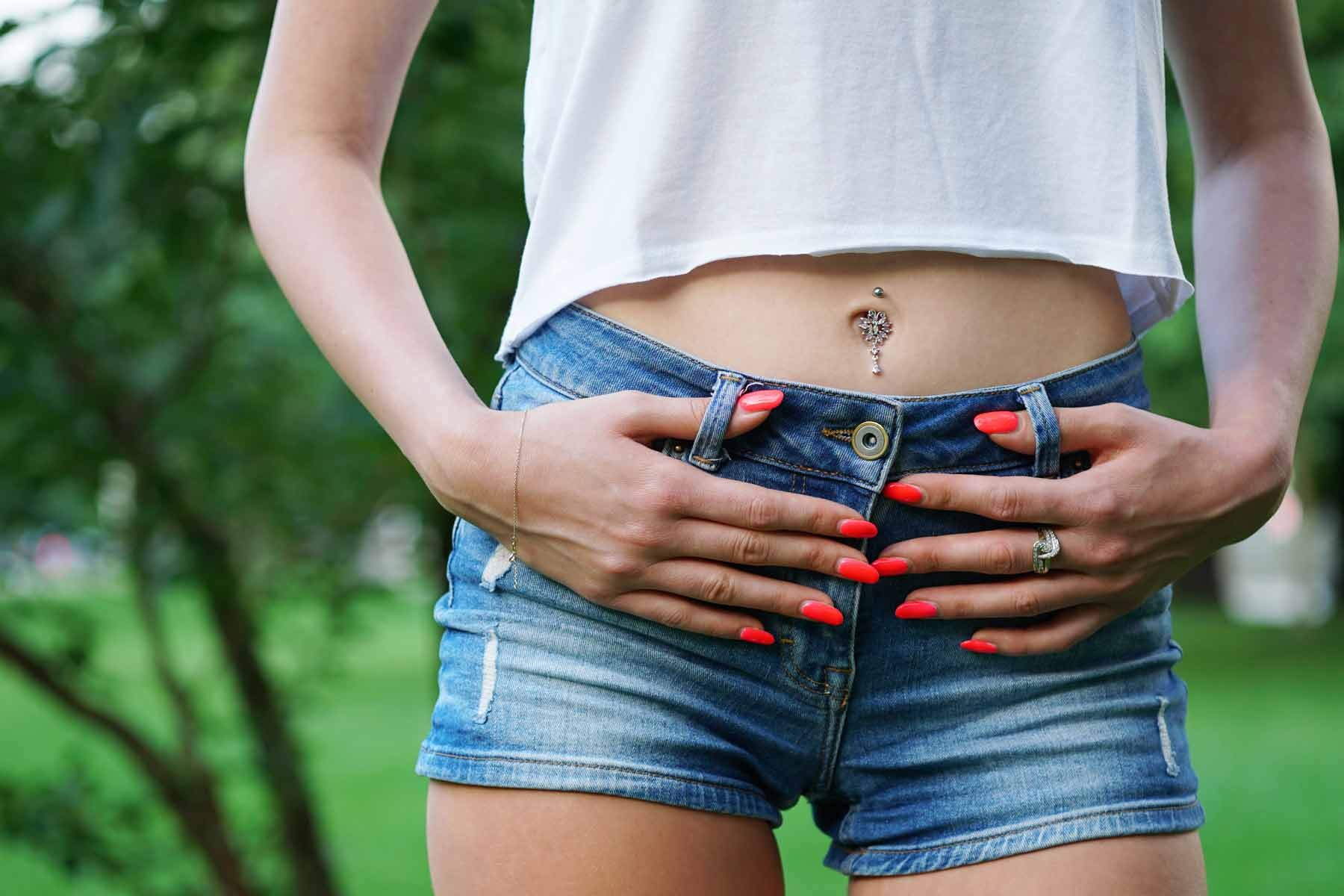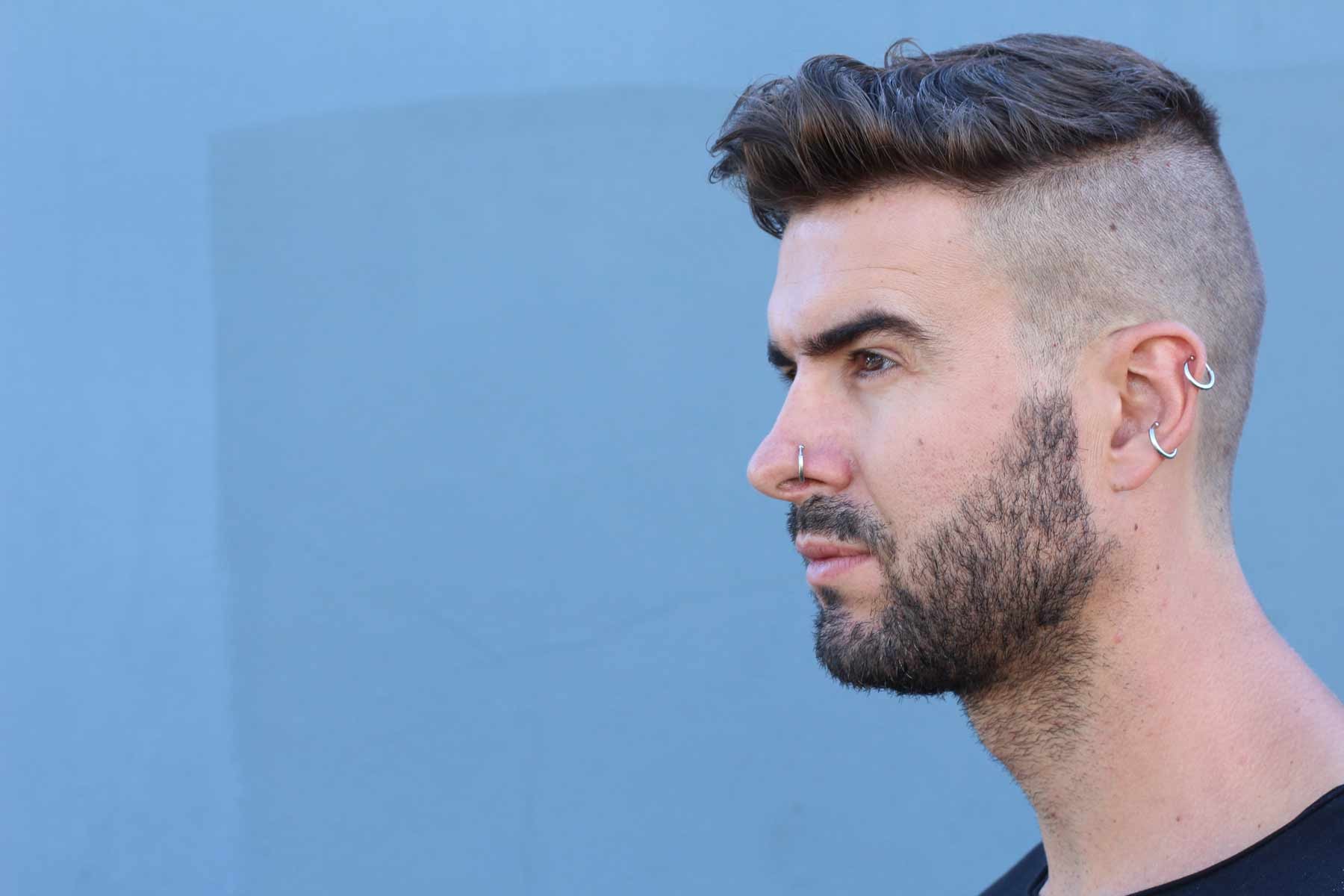How Much Do Piercings Cost? Understanding the pricing of different types of piercings, including ear, nose, lip, and body piercings, is essential for making informed decisions. At HOW.EDU.VN, our team of experts can guide you through the factors that affect piercing costs and ensure you receive the best advice for your body modification journey. Discover the factors influencing costs, explore various piercing types, and ensure you’re well-prepared with expert guidance.
1. Understanding Piercing Costs: An Overview
Piercing costs can vary widely, generally ranging from $40 to over $100, contingent upon several key factors. These include the location of the piercing, the specific type of piercing you’re interested in, your choice of jewelry, and the piercer’s level of experience. Simpler piercings, like those on the earlobe, tend to be more affordable. However, more complex piercings, such as surface or cartilage piercings, necessitate advanced skills and, as a result, command higher prices. Body piercings, in particular, can range from $50 to above $150, which typically includes the cost of basic jewelry.
To ensure transparency, here’s a detailed breakdown of average piercing costs by type:
| Piercing Type | Average Cost (with Basic Jewelry) | Approximate Healing Time (Months) |
|---|---|---|
| Ear | ||
| Earlobe | $30 – $85 | 2 – 3 |
| Helix | $40 – $90 | 3 – 9+ |
| Other Ear | $60 – $120 | 6 – 12+ |
| Facial | ||
| Eyebrow | $40 – $100+ | 3 – 6+ |
| Bridge | $75 – $150 | 4 – 12 |
| Nostril | $50 – $75 | 2 – 6 |
| Septum | $50 – $100 | 2 – 6 |
| Other Nose | $60 – $180 | 6 – 12 |
| Lip | $50 – $100 | 2 – 6 |
| Tongue | $40 – $80+ | 1.5 – 2 |
| Body | ||
| Belly Button | $50 – $100 | 6 – 12 |
| Nipple | $50 – $100 | 6 – 12+ |
| Below Waist | $70 – $150+ | 6 – 12 |
| General | ||
| Surface | $60 – $100 | 3 – 12 |
| Dermal | $60 – $100 | 1 – 3+ |





2. Detailed Look at Ear and Helix Piercing Costs
Ear piercing prices vary widely, from $30 for a standard earlobe piercing to over $150 for more complex surface piercings on the tragus. These costs typically include the piercing procedure and basic jewelry. Upgrading to higher-quality jewelry can increase the overall cost but significantly reduces the risk of allergic reactions.
The table below provides a comprehensive breakdown of ear piercing costs by type:
| Type | Average Cost* |
|---|---|
| Ear Lobe | $30 – $85 |
| Helix | $40 – $90 |
| Snug / Anti-Helix | $60 – $110 |
| Tragus/Anti-Tragus | $60 – $100 |
| Daith | $60 – $120 |
| Conch / Rook | $60 – $110 |
| Industrial | $70 – $100 |
| Surface | $70 – $150+ |
*Includes piercing fee and basic jewelry
It’s worth noting that the snug piercing is often considered one of the most painful cartilage piercings. Also, individual anatomy may not be suitable for all types of ear piercings. For professional and safe piercing procedures, consulting with experts at HOW.EDU.VN ensures personalized advice and guidance.
The Association of Professional Piercers (APP) recommends using a hollow needle for all piercings, even traditional earlobe piercings, instead of a piercing gun. This method is considered safer and more precise.
3. Eyebrow Piercing Costs
Eyebrow piercings typically range from $40 to $90, including basic jewelry. This price covers a traditional vertical piercing through the eyebrow. The piercing fee alone is usually between $20 and $50. Some studios may charge an additional $10 for horizontal eyebrow piercings above the brow or anti-eyebrow piercings on the upper cheekbone area.
Anti-eyebrow piercings, also known as butterfly kiss or teardrop piercings, offer a unique aesthetic. Understanding these variations can help you make an informed decision about your piercing choice.
4. Nose and Septum Piercing Costs
Nose piercing costs range from $50 to $180, including piercing and basic implant-grade jewelry. Classic nostril piercings are the most affordable, while complex nose piercings that require highly experienced piercers tend to be more expensive.
Nostril and septum piercings are among the most common types of nose piercings. A septum piercing costs between $50 and $100 on average, similar to or slightly higher than a standard nostril piercing, depending on the studio. This piercing goes through the thin membrane between the septum cartilage and the tip of the nose.
Less common nose piercings, such as high nostril, rhino, septril, bridge, and nassallang piercings, are more complex and costly. Seeking advice from experienced professionals ensures that the piercing is done safely and correctly.
5. Lip Piercing Costs
Lip piercings range from $50 to $100, including $30 to $60 for the piercing itself and $20 to $40 for basic jewelry. There are over ten different types of lip piercings, and styles that involve two or more piercings typically cost more due to the additional time and jewelry required.
The most common lip piercing is the labret, placed just below the lower lip line, either centered or off-center. Starting with a lip ring can increase the risk of complications and prolong healing. It is often recommended to begin with a flat-back stud until the piercing heals, which may take six months or longer.
6. Tongue Piercing Costs
Tongue piercings typically cost between $40 and $80 for either a midline vertical tongue piercing or a tongue web piercing, including the piercing and standard jewelry. Double tongue and venom bites piercings, which involve two piercings, cost $80 to $160 to account for the extra piercing and jewelry.
Horizontal tongue piercings like frog eyes/surface and snake eyes/scoop piercings can cause permanent damage to the teeth, muscles, and nerves. These high-risk piercings are banned in some states, and most reputable piercers do not offer or recommend them.
It’s crucial to clarify the specific details of the piercing you want, as terminology can vary between shops. Consulting with experts at HOW.EDU.VN can provide clarity and ensure informed decisions.
7. Belly Button Piercing Costs
Belly button piercings range from $50 to $100, including $30 to $50 for the piercing fee and $20 to $50 for basic navel jewelry. Initially, a curved barbell is used. After the initial healing phase, other jewelry options include captive bead rings, circular barbells, and belly rings with charms.
Proper aftercare is crucial for belly button piercings to avoid infections and ensure proper healing. Experts at HOW.EDU.VN offer detailed guidance on aftercare practices to help ensure a smooth healing process.
8. Nipple Piercing Costs
Nipple piercings cost $50 to $100 per nipple, including the piercing procedure and basic jewelry. Many shops offer a discount for the second piercing when both nipples are pierced during the same appointment. Nipple piercings are more prone to infection than some other piercings, so high-quality jewelry and diligent aftercare are essential.
Seeking advice from experienced piercers and healthcare professionals is crucial for minimizing risks and ensuring proper healing. HOW.EDU.VN can connect you with experts who offer personalized advice and support.
9. Dermal and Surface Piercing Costs
Dermal and surface piercings cost $60 to $100 per piercing. In some piercing shops, this price includes jewelry, while in others, it only covers the piercing fee. Both dermal and surface piercings require careful aftercare and have higher risks of migration or rejection compared to other piercings.
Dermal piercings, or microdermal implants, involve a single point of entry in the skin. A small anchor sits beneath the surface, with a removable top that sits above the skin, creating the appearance of jewelry emerging directly from the skin. Popular areas for dermal piercings include cheekbones, dimples, neck, collarbones, chest, hips, and back.
Surface piercings have an entry and exit point. A surface barbell sits parallel to the surface of the skin, with the bar under the skin and the jewelry ends visible above the skin. Suitable placements include the tragus, anti-eyebrow, horizontal eyebrow, forehead center, below the collarbone, and above the hips.
A professional piercer may recommend a dermal anchor over a surface bar or vice versa, depending on your anatomy and the desired piercing location. Dermal and surface piercings are considered “long-term temporary” and may last several months to years, depending on the area.
10. Below the Waist Piercing Costs
Genital piercings range from $70 to $150+ for the piercing and implant-grade jewelry. These include piercings like Christina, Prince Albert, or labia piercings. Their higher cost reflects the complexity and sensitivity of the area. Always choose an experienced piercer specializing in genital piercings, and ensure proper aftercare is followed for these intimate modifications.
11. Factors Affecting Body Piercing Prices
Several factors influence the overall cost of a piercing:
- Studio Type & Location: Professional piercing studios typically charge more than retail stores or kiosks due to more experienced piercers and strict adherence to industry hygiene and safety standards.
- Experience & Reputation: Seasoned piercers with advanced skills often charge higher rates. Well-established, reputable studios may also charge more for their services.
- Age: Some piercing shops charge higher fees for children under a certain age.
- Type of Piercing: More intricate piercings require specialized skills, increasing the cost.
- Aftercare: Some studios include aftercare products or follow-up appointments in their pricing, while others charge separately.
- Discounts: Some shops offer specials or discounts for multiple piercings in one session.
- Tipping: While not required, tipping is standard in the piercing industry, typically 15% to 20% of the total.
- Complications: Infections may require additional costs for doctor’s appointments and medications.
11.1 Jewelry
The material and style of the initial jewelry significantly impact the overall cost. Prices range from under $20 to $200 or more. Basic jewelry is typically implant-grade steel or titanium. Higher-quality materials like titanium, niobium, and gold (14k or higher) cost more but reduce the risk of allergic reactions.
11.2 Aftercare
Proper aftercare is crucial for all piercings. Your piercer will provide detailed instructions based on the piercing type, but most include cleaning the piercing one to three times daily with a sterile saline wash, also called wound wash. When not included in the piercing fee, aftercare products average $5 to $20.
Besides keeping the area clean and dry, follow these additional guidelines:
- Avoid moving, rotating, or touching the piercing during healing.
- Don’t sleep on the piercing or put unnecessary pressure on it.
- Avoid clothing or accessories that may snag or aggravate the area.
- Don’t submerge the pierced area in any body of water until fully healed.
- Avoid contact with harsh cleansers, lotions, or products with additives.
- Use fresh cotton swabs or non-woven gauze instead of cloth towels.
- Refrain from sexual activity until the piercing has completely healed (for facial, oral, and below-the-waist piercings).
11.3 Downsizing & Stretching
Some studios offer free jewelry change services, requiring only the purchase of new jewelry. Other shops charge from $5 to $25, while stretching typically starts around $10 per session.
Downsizing: Starter jewelry is often longer to accommodate swelling during healing. Switching to a shorter piece prevents migration or sideways turning.
Stretching: After complete healing, some individuals stretch their piercings to accommodate larger jewelry. This requires time, patience, and additional funds for appointments and jewelry as you gradually increase the size.
Stretching too much or too fast can lead to tissue damage or loss of the piercing. Do not stretch more than one gauge size larger than your current jewelry, and wait until the new size stabilizes before further stretching, which may take weeks or months.
12. Piercing Risks & Side Effects
Piercing is generally safe when performed by a qualified professional, but it carries risks. You are dealing with an open, healing wound for weeks, months, or longer, making the decision to get pierced one that should not be taken lightly.
Consider the following potential side effects:
- Pain & Swelling: Most piercings involve initial pain, bleeding, swelling, and soreness during healing. Swelling may last up to two weeks. Cold compresses, OTC pain relievers, and adhering to aftercare instructions can help reduce these effects.
- Infection: Some piercings are more prone to infection than others, but all have this potential. Proper hygiene significantly reduces this risk.
- Allergic Reactions: Lower-quality steel jewelry may contain nickel, a common allergen. Choose hypoallergenic jewelry to minimize the risk.
- Scarring: Some people are prone to keloid formation, or thick scarring around the piercing. Proper aftercare and high-quality jewelry can help prevent unnecessary scars.
- Tearing: Keep the piercing covered when possible to protect the jewelry from snagging. Be mindful of clothing choices and physical activity.
- Migration or Rejection: The body may push the jewelry out over time. Use the proper jewelry type and thickness to help prevent this.
Some health conditions, including diabetes, autoimmune disorders, blood disorders, thyroid disorders, and skin conditions like eczema or psoriasis, may affect the healing process. Consult a healthcare professional to confirm whether your desired piercing is safe for you.
13. Piercing FAQs
13.1 Do piercing prices include jewelry?
Many reputable piercers include basic jewelry in their pricing, but this can vary. Premium materials and higher-end or custom pieces typically cost extra. Always ask about pricing before getting pierced. Some shops offer package deals that include the piercing service, jewelry, and aftercare supplies.
13.2 What is the most painful piercing?
Pain is highly subjective, but areas with more nerve endings or thicker cartilage are generally considered more painful. Industrial, nipple, snug, and genital piercings are often reported as being among the most painful. Septum and daith piercings can also be quite uncomfortable. Proper piercing techniques can minimize discomfort.
13.3 When can I change my piercing?
In most cases, wait until the piercing is fully healed before changing jewelry. Healing time varies depending on the piercing type, aftercare practices, lifestyle, and overall health. Ensure there is no pain, swelling, or discharge before changing jewelry. If unsure, consult your piercer for a professional assessment. For dermal piercings, you can change the top as desired, but have a professional piercer perform these changes until the piercing is fully healed.
13.4 Can you get piercings while pregnant?
It’s best to avoid getting new piercings during pregnancy. Your body’s immune system changes, potentially increasing infection risk. Hormonal changes can also affect the healing process. Additionally, treatment options may be limited due to the pregnancy. If you’re pregnant and considering a piercing, consult both your doctor and a professional piercer for guidance.
13.5 What piercing helps with headaches?
Some people report that daith piercings, which pass through the innermost cartilage fold of the ear, can help with migraines. However, scientific evidence is limited, and the reports are anecdotal. If you’re considering this for headache relief, consult a medical professional first and do not rely on it as a sole treatment.
14. How to Find the Best Piercing Shop
While some piercings are offered at mall kiosks and retail stores, these establishments often have inexperienced piercers, limited or lower-quality jewelry options, and potentially unsafe piercing techniques. Here are some guidelines for selecting a reputable piercing shop:
- Look for a licensed, insured piercing studio with an active Association of Professional Piercers (APP) membership.
- Ensure the space is clean, well-lit, and uses sterilized equipment and jewelry.
- Check reviews on Fash.com and Google. Ask people you trust for recommendations.
- Ask to see a portfolio of their work to get an idea of their experience and skill level.
- Confirm they use piercing needles rather than piercing guns, even for earlobe piercings.
- Ask about their jewelry options. A reputable piercer will use high-quality, implant-grade jewelry and be able to explain the materials they use.
- If you feel uncomfortable or if the studio doesn’t meet your cleanliness standards, do not hesitate to look elsewhere.
If you struggle to find a professional piercing studio in your area, many local tattoo shops offer professional piercing services and follow the same industry standards.
15. Essential Questions to Ask a Professional Piercer
Before getting pierced, ask your piercer the following questions:
- What’s your experience and training?
- Are you a member of the APP?
- Do you have a portfolio of your work?
- What are your sterilization procedures?
- Is my anatomy suitable for the type of piercing I want?
- What type of jewelry do you use or recommend?
- What aftercare do you recommend?
- How long will healing take?
- What are the potential risks?
- How much will it cost, including jewelry?
- What should I do if there are complications?
- Are there any special considerations for my chosen piercing?
- What do you charge for follow-up visits, jewelry changes, and removal?
16. Connect with the Experts at HOW.EDU.VN
Navigating the world of piercings can be complex, with varying costs, risks, and aftercare requirements. At HOW.EDU.VN, we connect you with over 100 renowned experts who can provide personalized advice and address all your concerns. Whether you’re curious about piercing costs, finding a reputable professional, or ensuring proper aftercare, our team is here to guide you.
16.1 Benefits of Consulting Our Experts
- Personalized Guidance: Receive advice tailored to your specific needs and concerns.
- Expert Knowledge: Benefit from the insights of leading experts in body modification and healthcare.
- Comprehensive Support: Get answers to all your questions, from costs to aftercare.
- Peace of Mind: Make informed decisions with the confidence that you’re receiving the best advice.
16.2 How to Get Started
- Visit HOW.EDU.VN: Explore our website to learn more about our services and experts.
- Contact Us: Reach out via our contact form, WhatsApp, or phone to schedule a consultation.
- Ask Your Questions: Submit your questions and concerns to our experts, and receive detailed, personalized answers.
17. Ready to Get Started? Contact Us Today
Don’t navigate the complexities of piercings alone. Contact HOW.EDU.VN today and connect with our team of renowned experts who can provide personalized guidance and support. Whether you’re curious about piercing costs, seeking a reputable professional, or ensuring proper aftercare, we’re here to help you make informed decisions and achieve your aesthetic goals safely and confidently.
Contact Information:
- Address: 456 Expertise Plaza, Consult City, CA 90210, United States
- WhatsApp: +1 (310) 555-1212
- Website: HOW.EDU.VN
18. Unlock Expert Insights and Achieve Your Piercing Goals
Getting a piercing is more than just a cosmetic decision; it’s a personal expression that should be approached with care and informed knowledge. At HOW.EDU.VN, we understand the importance of making the right choices. Connect with our team of over 100 Ph.D. experts and receive the personalized advice you need to ensure a safe, satisfying, and stylish piercing experience. Let us help you navigate the world of body modifications with confidence and expertise.
19. Call to Action
Are you ready to take the next step in your piercing journey? Do you have questions about costs, procedures, or aftercare? Contact how.edu.vn today and let our team of world-renowned experts guide you every step of the way. We’re here to provide the personalized advice and support you need to achieve your piercing goals safely and confidently. Reach out now and unlock the expertise you deserve.
20. Disclaimer
The information provided in this article is intended for general knowledge and informational purposes only, and does not constitute medical advice. It is essential to consult with a qualified healthcare professional for any health concerns or before making any decisions related to your health or treatment. Always seek the advice of a medical professional for any questions about your particular circumstances.
This article may contain links to external websites that are not under our control. We are not responsible for the content or accuracy of these sites. Any reliance you place on such information is strictly at your own risk.